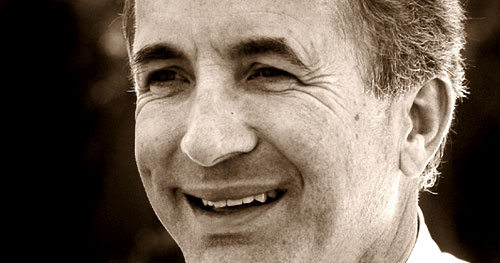
Compassion, Serenity and a sense of Peace
I was reading some article that mentioned Near Death Experiences or N.D.E. It indicated that many people who experienced a near death event were profoundly changed by it. Many of the changes reported were the same things I was learning from Warriorschool and Jeff Prather. I got that sense, that the WS'ers had that compassion, serenity and peace that only a select few in history were aware of or even dreamed to achieve. That is what attracted me to them and held me there. Who would have thought, that these feelings and conditions can be replicated in a lab and do not require any sort of spiritual beliefs. Anyway, I still feel that these sort of virtues are some of the most valuable things people can obtain and I wish everyone could become aware of them and acquire them, but that is probably not possible. For now, just be aware that these experiences are merely brain processes, kicked in by extreme stress or by brain problems. Don't surrender your free will over to WS or Jeff Prather, just because they talk about awesome things and help you experience awesome things. They have no 'spiritual power' they are merely facilitating absolutely primal experiences. They do not have access to a deeper or higher reality. Read up, educate yourself. Free yourself from exploitation.
http://en.wikipedia.org/wiki/Near-death_experience
Here are some excerpts
A near-death experience (NDE) refers to a broad range of personal experiences associated with impending death, encompassing multiple possible sensations ranging from detachment from the body, feelings of levitation, extreme fear, total serenity, security, or warmth, the experience of absolute dissolution, and the presence of a light, which some people interpret as a deity[1] Some see NDEs as a paranormal and spiritual glimpse into the afterlife.
Such cases are usually reported after an individual has been pronounced clinically dead, or otherwise very close to death, hence the entitlement near-death experience. Many NDE reports, however, originate from events that are not life threatening. With recent developments in cardiac resuscitation techniques, the number of NDEs reported has increased. Most of the scientific community regards such experiences as hallucinatory,[2][3][4] while paranormal specialists and some mainstream scientists claim them to be evidence of an afterlife.[5][6][7]
Characteristics
In some cases, a NDE any particular person experiences varies depending on the beliefs that the person held[citation needed]. Children, who typically do not have enough time to develop strongly towards one faith, had very limited NDEs. Examples of this include a boy simply having talked to his brother in his NDE and a daughter having a conversation with her mother.[12][13] The phenomenology of an NDE usually includes physiological, psychological and alleged transcendental aspects.[14] Typically, the experience follows a distinct progression:[15][16][17]
1. A very unpleasant sound/noise is the first sensory impression to be noticed (R. Moody: Life after Life);
2. A sense of being dead;
3. Pleasant emotions; calmness and serenity;
4. An out-of-body experience; a sensation of floating above one's own body and seeing the surrounding area;
5. Floating up a blue tunnel with a strong, bright light or garden at the end;
6. Meeting deceased relatives or spiritual figures;
7. Encountering a being of light, or a light (often interpreted as being the deity or deities they personally believe in);
8. Being given a life review (the "life-flashing-before-your-eyes" phenomenon);
9. Reaching a border or boundary;
10. A feeling of being returned to the body, often accompanied by a reluctance.
11. Feeling of warmth even though naked.
Some people have also experienced extremely distressing NDEs, which can manifest in forewarning of emptiness or a sense of dread towards the cessation of their life.
According to the Rasch model-validated NDE scale, a "core" near-death experience encompasses peace, joy, and harmony, followed by insight and mystical or religious experiences.[18] The most intense NDEs are reported to have an awareness of things occurring in a different place or time, and some of these observations are said to have been evidential.
Clinical circumstances that are thought to lead to an NDE include conditions such as: cardiac arrest, shock in postpartum loss of blood or in perioperative complications, septic or anaphylactic shock, electrocution, coma, intracerebral haemorrhage or cerebral infarction, attempted suicide, near-drowning or asphyxia, apnoea, and serious depression.[17] Many NDEs occur after a crucial experience (e.g. when a patient can hear that he or she is declared to be dead by a doctor or nurse), or when a person has the subjective impression to be in a fatal situation (e.g. during a close call automobile accident). In contrast to common belief, attempted suicides do not lead more often to unpleasant NDEs than unintended near-death situations.[19]
Effects
Near-death experiences can have tremendous effects on the people who have them, their families, and medical workers. Changes in values and beliefs often occur in the experiencer after a near-death experience, including changes in personality and outlook on life, such as a greater appreciation for life, higher self-esteem, greater compassion for others, a heightened sense of purpose and self-understanding, and a desire to learn. The changes may also include an increased physical sensitivity to and diminished tolerance of light, alcohol and drugs.
Matthew Dovel, author of "My Last Breath", having had two near-death experiences, discusses the side effects associated with having had a NDE (Empathic, telepathy, clairaudience, clairvoyance, precognition, remote viewing, animals, children, and timepieces). [33]
http://en.wikipedia.org/wiki/Near-death_experience


